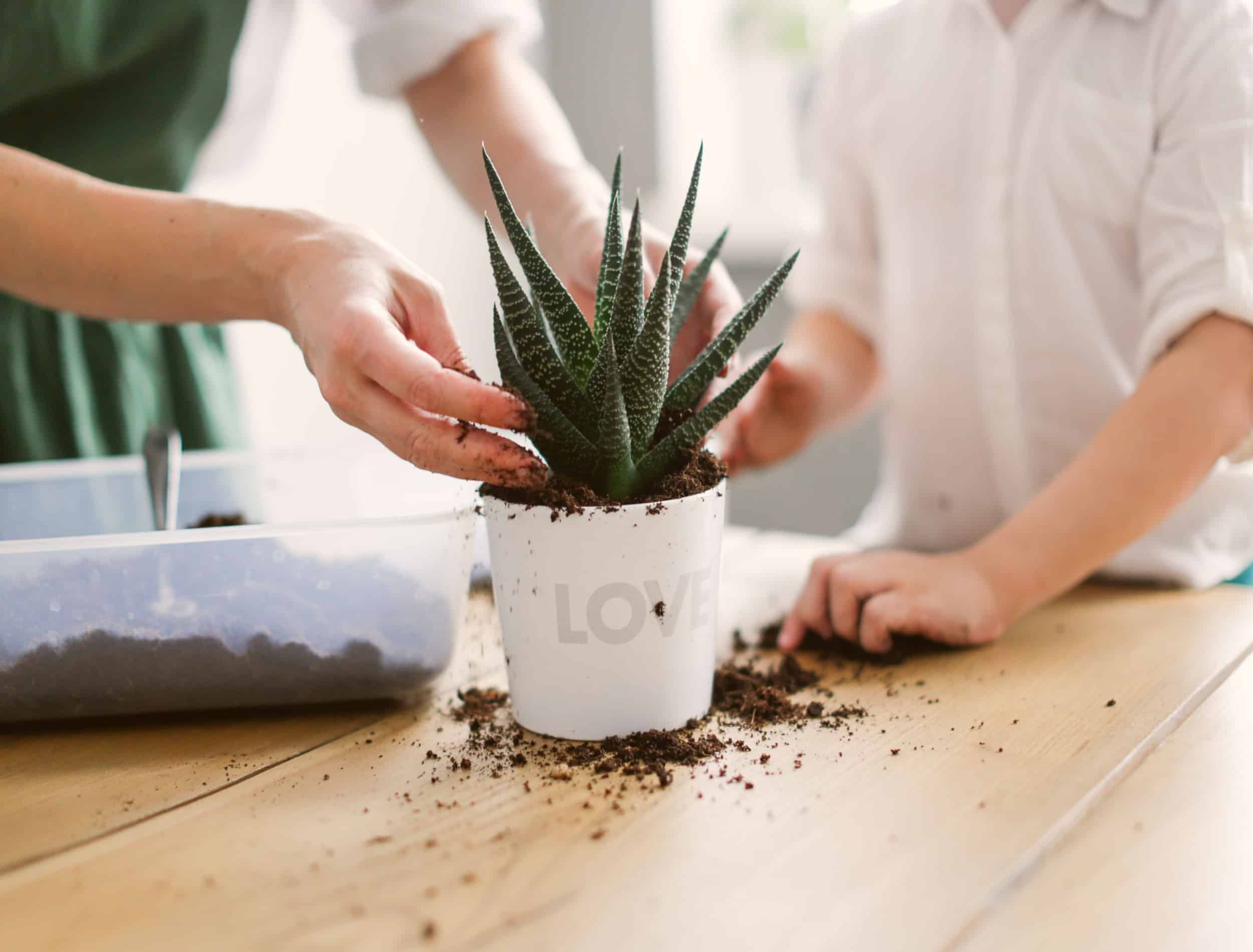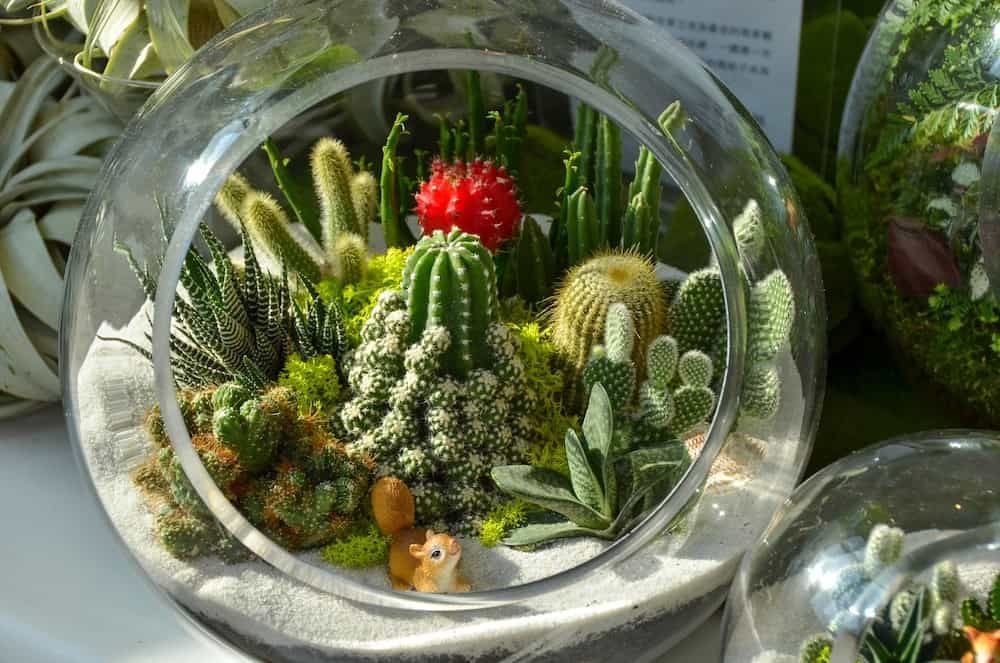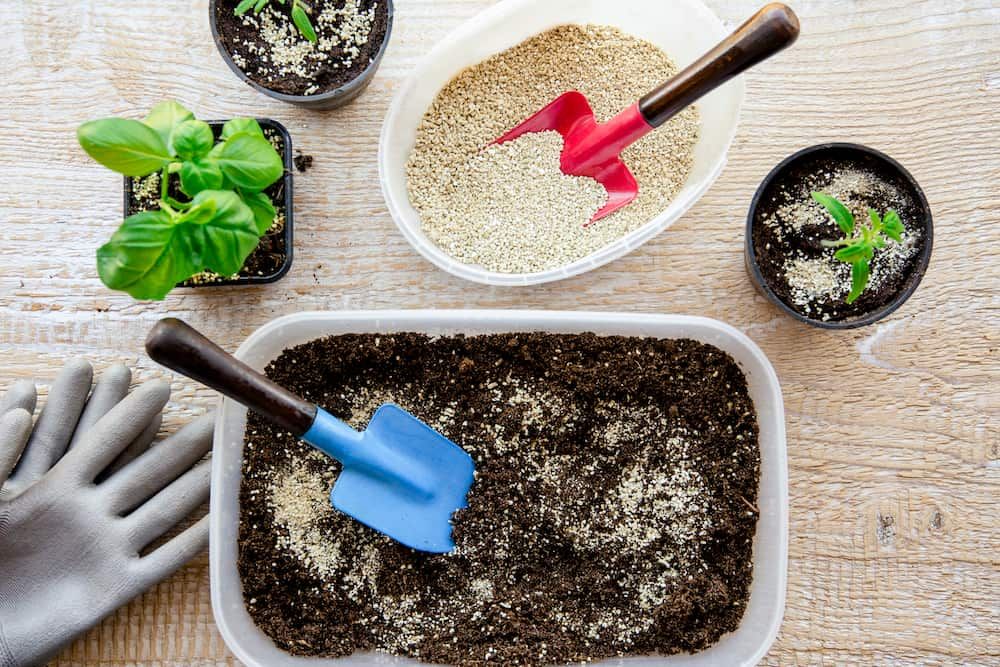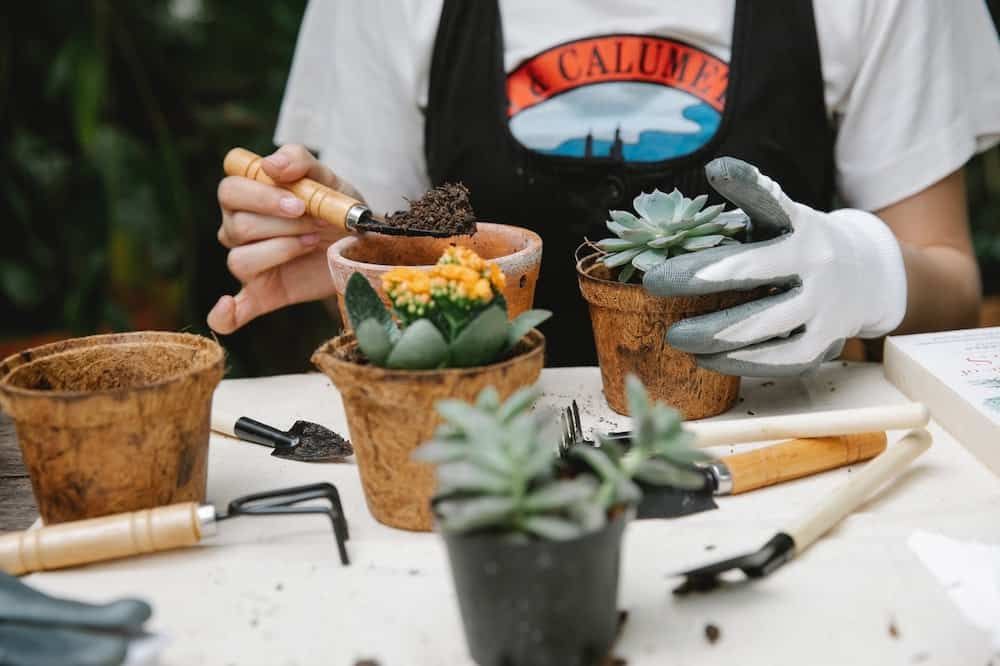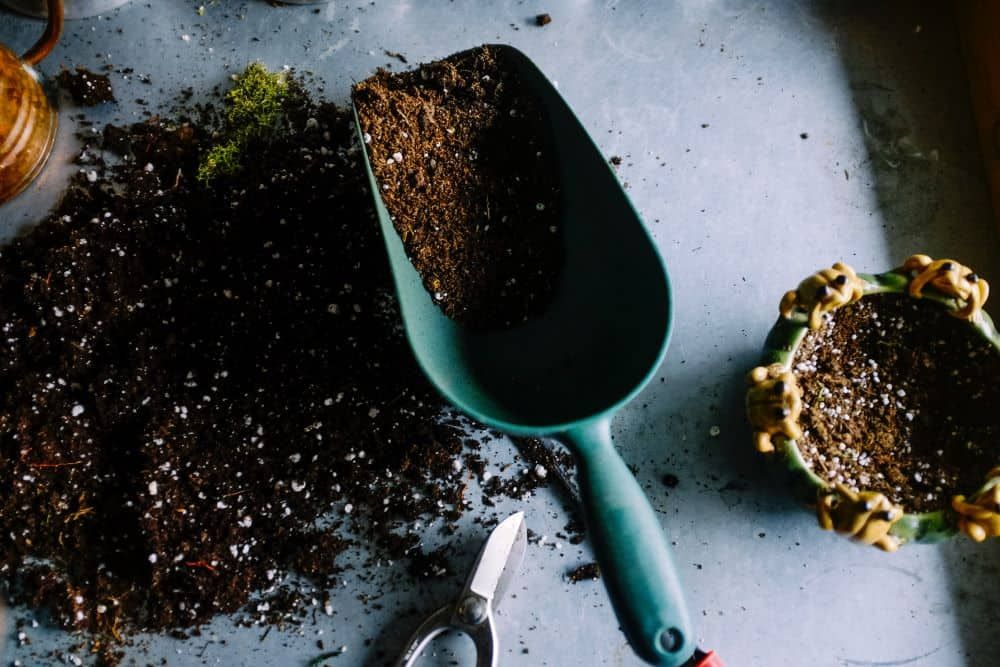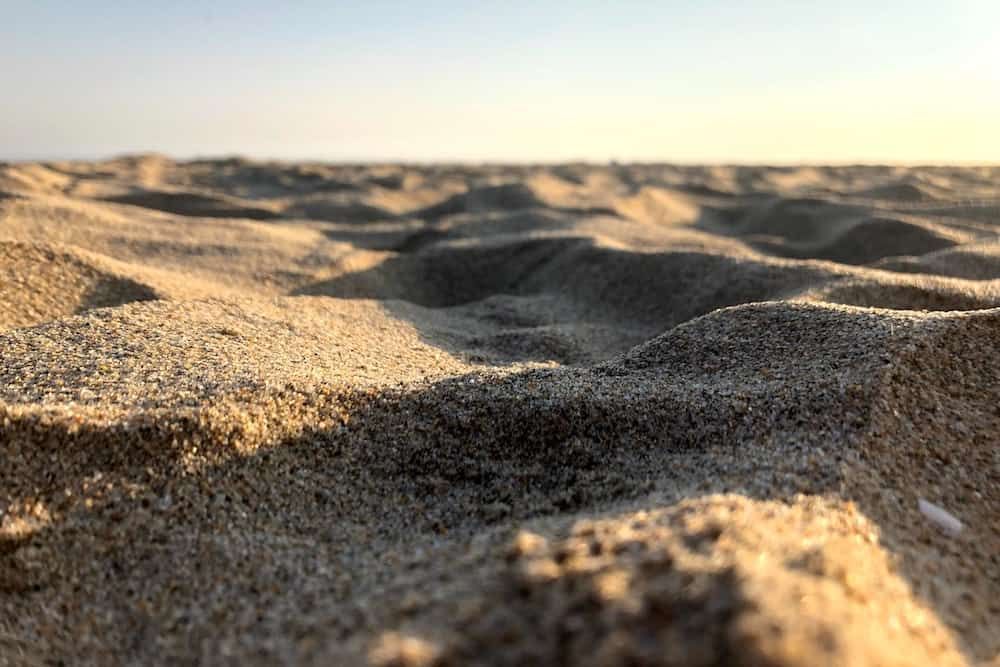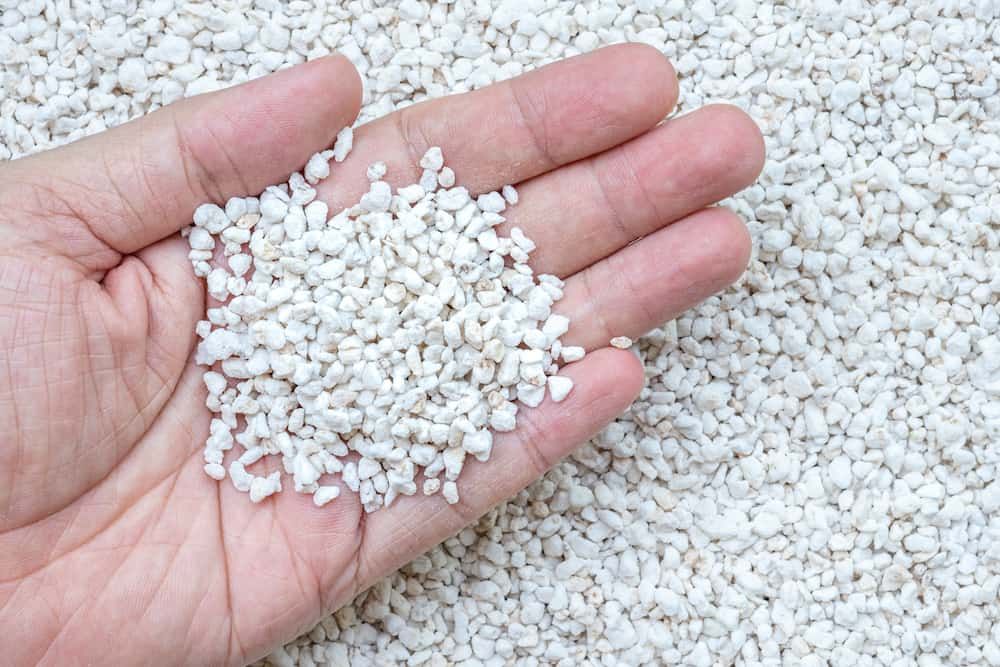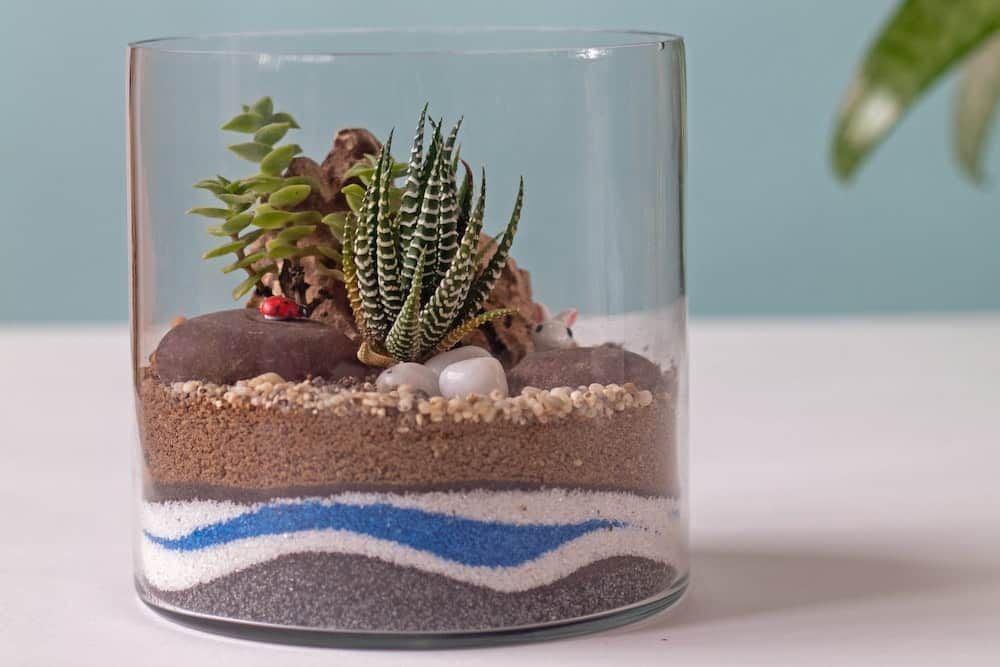Succulents are incredibly unique and vibrant, as well as quite hardy. But, at the same time, they can be picky especially when it comes to soil. As a matter of fact, the soil has the most impact on how well your succulents will thrive -- these plants are too unique for regular gardening soil!
Even though succulents are known for being hard to kill, they do demand a special soil mix that's well-draining, well-aerated, and coarse. One of the most common succulent garden mistakes is failing to provide them with conditions that mimic their natural arid desert environment. If you notice brown, yellow, or black mushy leaves on your succulents, it means that your plant is dying from over-watering or root rot from compacted or damp soil.
To avoid premature succulent death, it's important to provide them with the right soil mix to thrive. Read on to find out exactly what it is and how to make it yourself.
Why It's Important to Get Your Succulent Soil Mix Right
Image credits: Nadine Marfurt via Unsplash
Although people have kept succulents as indoor plants since at least the 17th century, their popularity shot up in 2007 and it was in 2017 that they made 15 percent of garden sales. Succulents have very fleshy stems and leaves. This is because they are typically desert plants and are adapted to storing water to survive in drought conditions. This is why damp soil is not good for them, as it may lead to pests, root rot, and fungal and bacterial issues. When taking care of succulents, try to recreate the conditions they typically thrive in. This is why making the perfect succulent potting mix is crucial. The three primary characteristics of good succulent soil are:
- Provides the right nutrients, primarily nitrogen and phosphorus.
- Provides anchorage for the roots, so that they have enough stability.
- Absorbs moisture and provides it to the plant.
What You Will Need to Prepare Your DIY Succulent Soil
You won’t need too many things to make your homemade succulent soil. The materials and tools you’ll use are:
- Gardening gloves
- Measuring cup
- A trowel
- A bucket or a plastic bin
- Traditional potting soil or you can mix your own potting soil
- Pumice or perlite
- Coarse sand or crushed granite
Step-by-Step Guide to Making Succulent Soil
Step 1: Combine "Ingredients"
Image credits: FotoHelin via Shutterstock
Combine traditional potting mix, coarse sand or crushed granite, and pumice or perlite. Use a 3: 2: 1 ratio -- three parts potting mix, two parts sand or crushed granite, and one part of pumice or perlite. Use a trowel to mix thoroughly or wear your gardening gloves and mix by hand.
Step 2: Put the Soil in a Pot
Image credits: Gary Barnes via Pexels
Put the soil inside of a pot that has drainage holes to ensure water drains properly. There you have it! You've just made the perfect growing medium for cacti and succulents. Now, it's time to plant your succulents.
Remember to only water them once the soil is dry. Always check soil moisture to ensure you're not over-watering your succulents.
What are the Best Ingredients for a Successful DIY Succulent Soil
1. Potting/Garden Soil
Image credits: Neslihan Gunaydin via Unsplash
Although potting soil is preferable, you can use garden soil as a base for your succulent soil as long as it isn't heavy and doesn't contain vermiculite or any other ingredient that adds moisture or retains water. Look for light and porous soil to use for your succulents, because heavy soil is prone to water retention and compaction, which can cause root rot and plant death. Finally, make sure it is sterile and fresh. Succulents planted in garden soil will do better outdoors than indoors.
2. Coarse Sand
Image credits: Matt M via Pexels
Sandy soil is best for succulents. You should use coarse sand or crushed granite for fast drainage. Don't use fine sand, as it retains a lot of water and will suffocate your succulents.
You should never use sand from the garden, the beach, or a sandbox since it's not sterile and can carry diseases and pests that you could unknowingly introduce to your plants.
3. Perlite
Image credits: RPA Studio via Shutterstock
Perlite is a light inorganic soil additive. It doesn’t retain a lot of moisture and will help fight soil compaction. Moreover, it can provide excellent drainage and aeration.
Characteristics of Ideal Succulent Soil
Image credits: Art and Soil Bangalore via Unsplash
Root rot is one of the greatest dangers to succulents because it affects the main way the plant gets nutrients and water. This issue almost always leads to a plant’s demise. This is why it's important to have a good mix for your succulents. Down below are the characteristics of ideal succulent soil.
1. Good Drainage
This is always going to be at the top of the list because damp soil will lead to disaster for your succulents. You have to ensure that you have loose and grainy soil. Additionally, to check if your soil is dry enough to water, put your finger in the soil, about 1 to 2 inches. It should feel dry and warm. If it feels cold, it is probably a little damper than it should be and you should ease off on the watering. Check again in 12 to 24 hours, depending on the amount of sunlight your succulent receives.
2. Soil Composition
The two main components of soil are organic matter and inorganic matter. Examples of organic matter are compost, peat moss or sphagnum moss, manure, coco coir, leaf and bark shreds, and decomposing plants. Minerals, clay, silt, and sand are considered inorganic matter. Inorganic matter helps with drainage, so it is not a surprise that succulents prefer soil with a very low level of organic matter.
3. Good Aeration and Non-Compaction
Most microorganisms in the soil require oxygen to thrive, therefore it’s a good idea to have well-aerated soil. Moreover, you should ensure that the succulent soil mix is non-compacting and not sticky because sticky soil retains water, which can ultimately cause root rot.
In Summary
While succulents are hardy and low-maintenance plants, they do require a little bit of extra love when it comes to their soil. The ideal soil must have excellent water drainage, achieved by using perlite and coarse sand. Moreover, it should contain potting or garden soil that has not been amended with vermiculite and is light and porous.
Hopefully, this article has helped you with making your own homemade succulent soil. As always, share your experiences and questions in the comment section down below. And don't forget to share the article if you liked it!
Happy Gardening!

